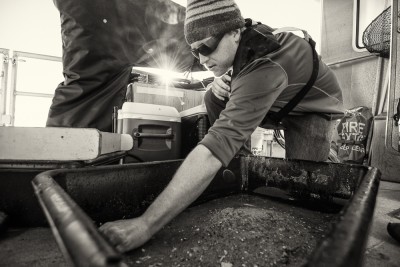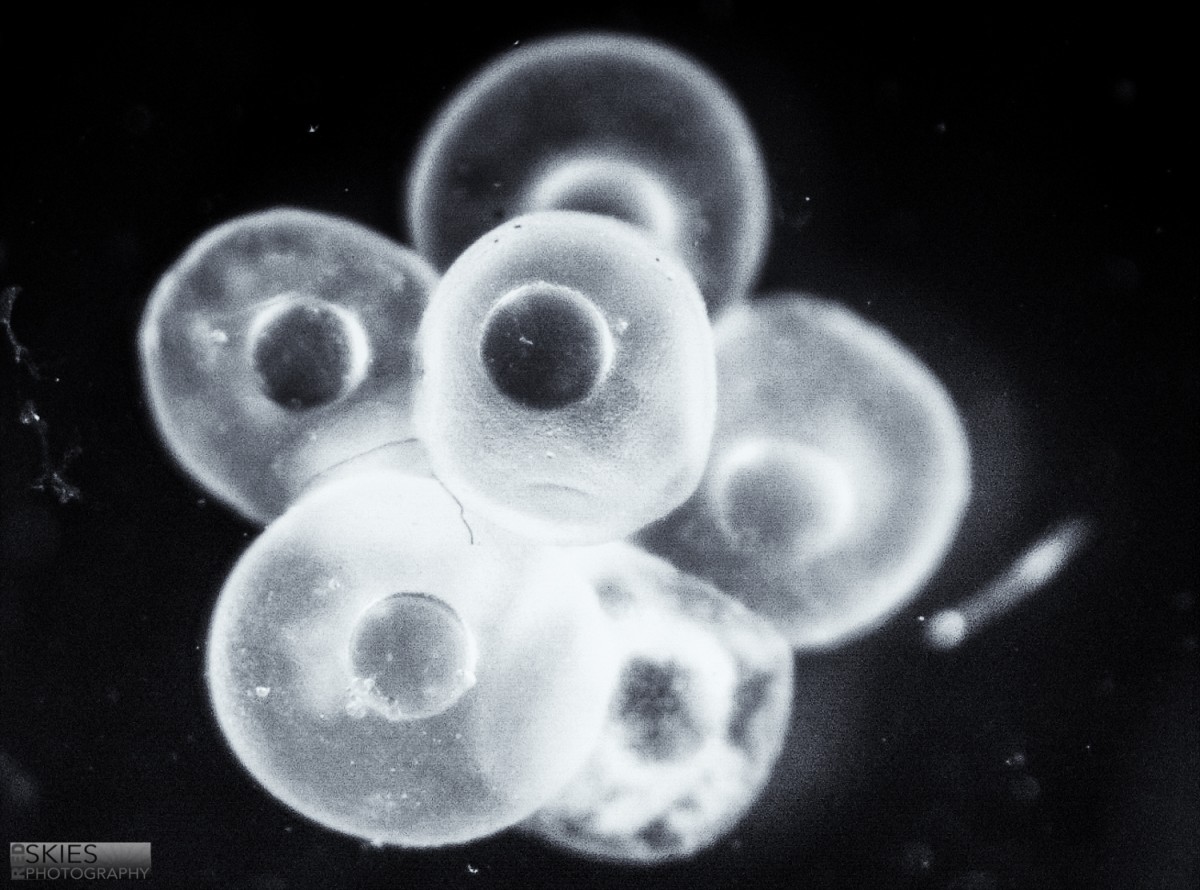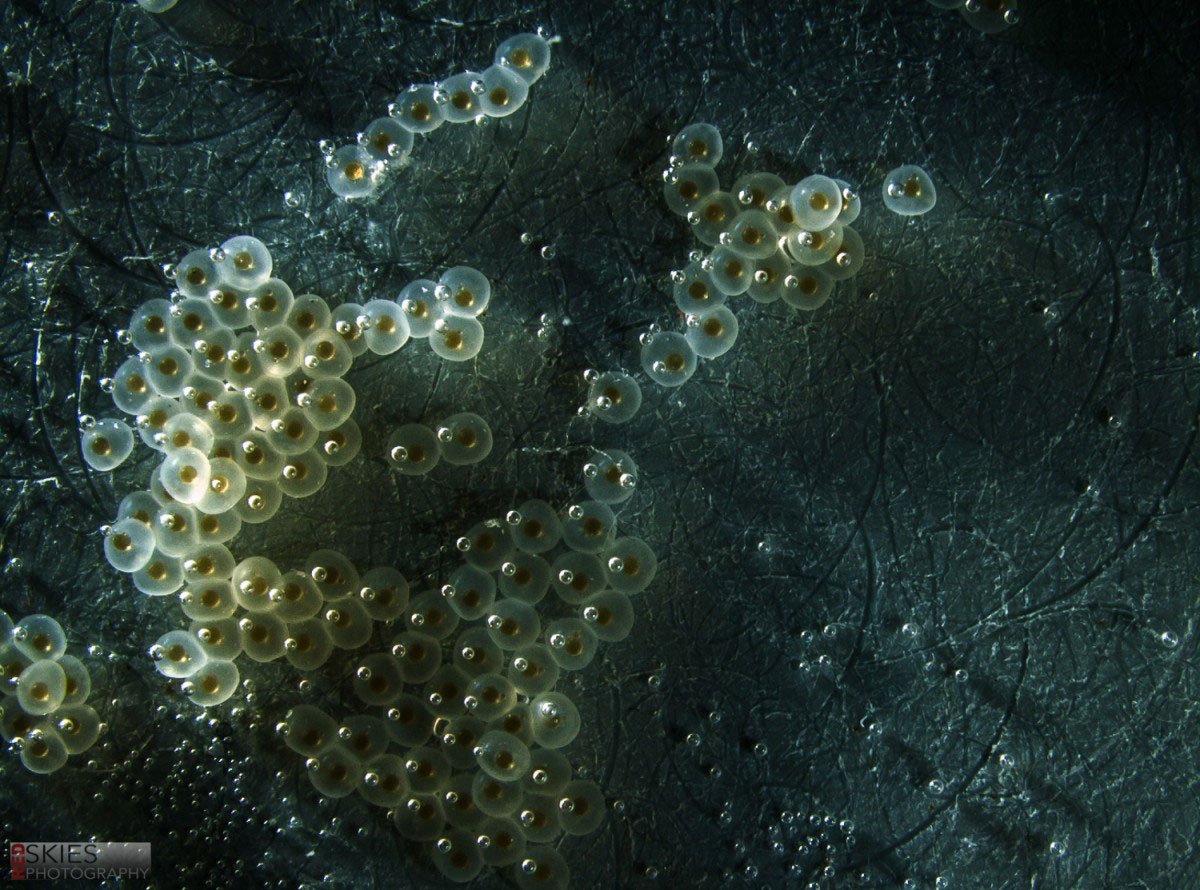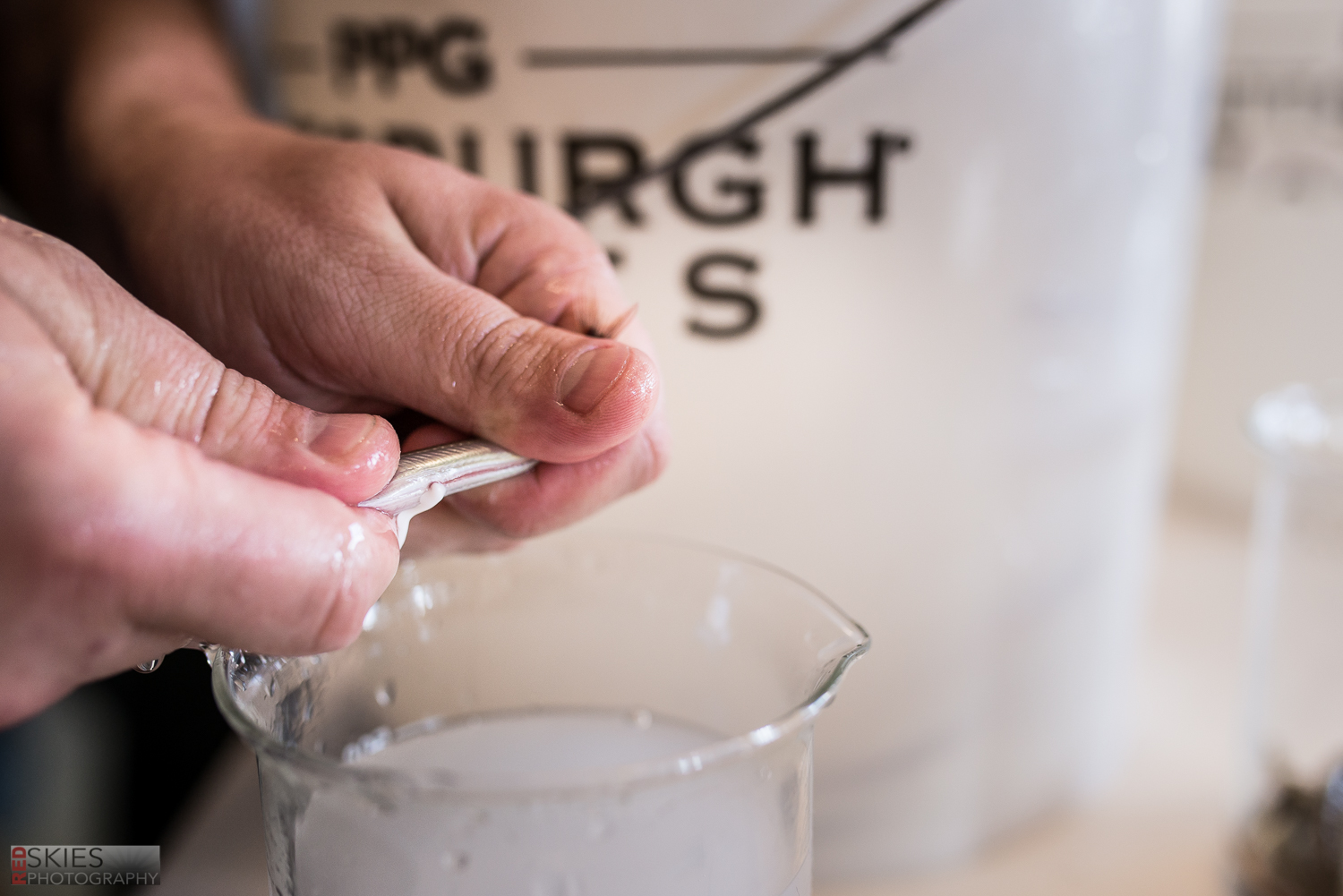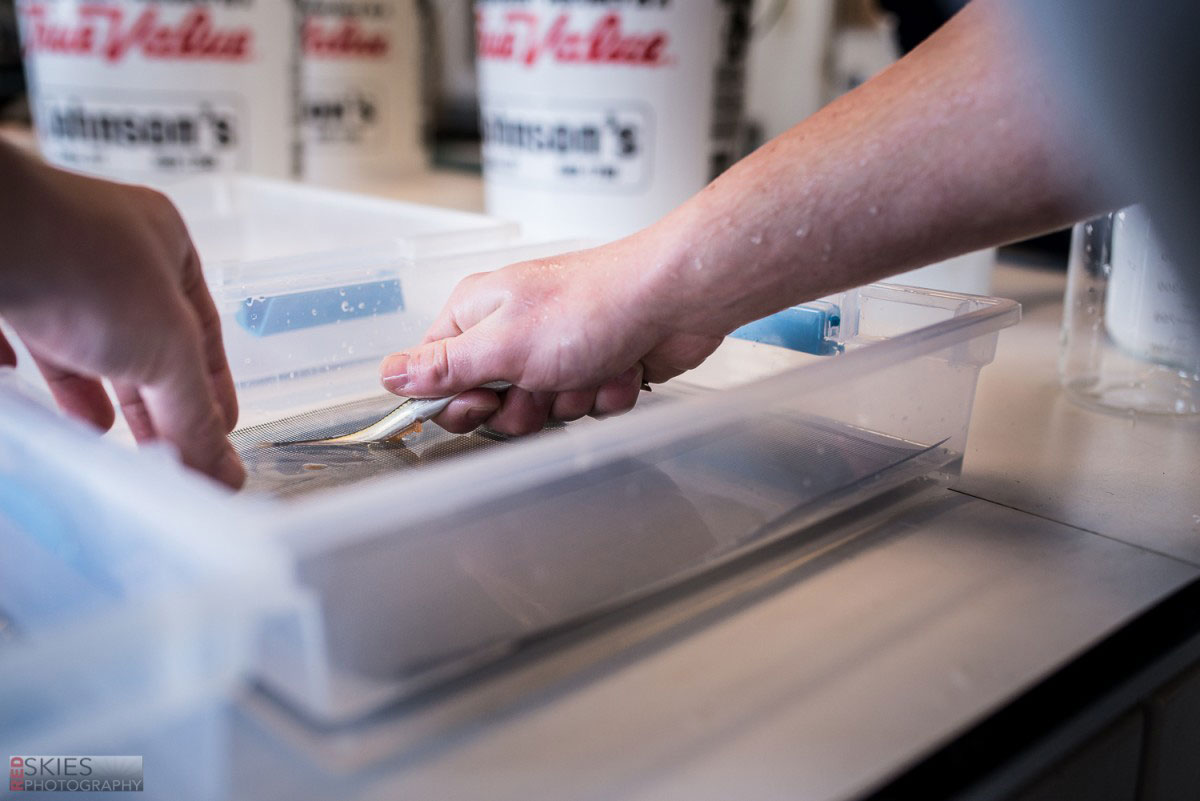On 27 October 2016, Hannes, Chris and Julie joined researchers from the Stellwagen Bank National Marine Sanctuary (David Wiley, Anne-Marie Runfola, Brad Cabe, Michael Thompson), the USGS (Page Valentine, Dann Blackwood) and the crew of the R/V Auk (Dave Slocum, James Stasinos) to embark on our first of five total sampling missions in this enigmatic marine habitat. Our goal, catching live Northern sand lance, Ammodytes dubius, the so critical forage fish species that is referred to as the “backbone of the sanctuary”, because all kinds of marine predators from whales to tuna to seabirds gather on the bank to feast on them.
Our renewed efforts are part of our recently funded NOAA Regional SeaGrant Project to investigate the effects of ocean warming, acidification and low oxygen on sand lance early life stages.
As before, we first started by deploying a Seaboss sediment grab, which allows our colleagues from the USGS to characterize sediment types in association with the occurrence of sand lance. In addition, however, we brought a small beam trawl along for the first time to find out, whether we could more effectively catch sand lance and then transport them live to our seawater facility at UConn Avery Point. We are happy report that the efforts by all have paid off and that there are now ~ 180 adult ripening sand lance swimming in our tanks. Thanks all, see you again for the second survey in a few weeks!
Check out the video below, made from clips of no less than five different GoPro’s (if you listen carefully, around 2:40 into the clip you’ll hear the singing of some nearby humpback whales):
